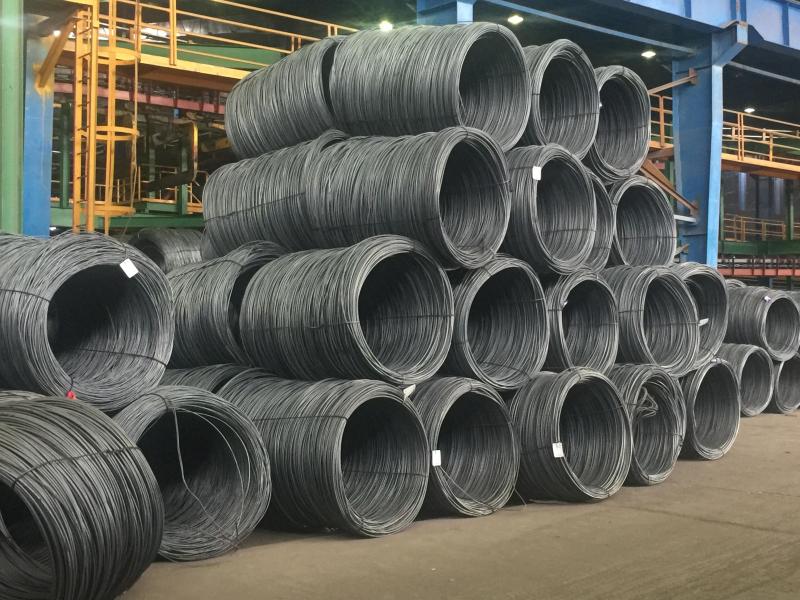
Exploring Steel Wire Rod Versatility and Applications
Wire rod is a versatile material that plays a crucial role in various industries. It is a long, cylindrical metal product with a round cross-section, typically manufactured from steel. Wire rod has a wide range of applications due to its excellent strength, flexibility, and durability. In this article, we will delve into the manufacturing process of wire rod, its properties and characteristics, and explore its diverse applications.
The manufacturing process of wire rod involves several steps to ensure its high quality and performance. It begins with the melting of raw materials, such as iron ore and scrap metal, in a blast furnace. The molten metal is then refined to remove impurities and achieve the desired chemical composition. Next, the refined metal is continuously cast into billets, which are long, semi-finished products. These billets are then reheated and passed through a series of rolling mills to reduce their diameter and increase their length. The final product is a long, continuous wire rod with consistent dimensions and mechanical properties.
Wire rod exhibits several key properties and characteristics that make it a sought-after material in various industries. First and foremost, wire rod possesses exceptional strength, allowing it to withstand heavy loads and resist deformation. Additionally, it offers excellent flexibility, enabling it to be easily bent, twisted, and shaped according to the desired application. Wire rod also demonstrates high ductility, meaning it can be stretched without breaking, making it suitable for applications that require elongation. Moreover, wire rod has good weldability, allowing it to be seamlessly joined with other materials. Lastly, wire rod has superior corrosion resistance, ensuring its longevity even in harsh environments.
In the construction industry, wire rod finds extensive use due to its versatility and strength. It is commonly employed in the reinforcement of concrete structures, such as beams, columns, and foundations. Wire rod is embedded in concrete to enhance its tensile strength and prevent cracks from developing. Additionally, wire rod is utilized in the construction of bridges, highways, and tunnels to provide structural support and ensure the durability of these infrastructures. Its high strength-to-weight ratio makes wire rod an ideal material for these applications, as it can bear heavy loads while minimizing the overall weight of the structure.
Wire rod also plays a vital role in the manufacturing of fences, which are essential for securing residential, commercial, and industrial properties. The versatility and durability of wire rod make it an ideal material for fence production. It can be easily formed into different shapes, such as straight, curved, or twisted, to create various fence designs. Moreover, wire rod fences offer excellent resistance to impact and corrosion, ensuring their longevity. Whether it is for privacy, security, or aesthetic purposes, wire rod fences provide a cost-effective and reliable solution for enclosing and protecting properties.
Wire rod is extensively used in the production of nails, which are essential fasteners in various industries, including construction, woodworking, and manufacturing. The manufacturing process of nails involves feeding wire rod into a nail-making machine, which cuts and shapes the wire rod into nails of different sizes and configurations. The strength and ductility of wire rod make it an ideal material for nail production, as it ensures the nails can penetrate different materials and withstand the forces exerted upon them. Additionally, wire rod nails have excellent corrosion resistance, preventing rusting and ensuring their reliability in various environments.
Apart from its applications in the construction industry and nail production, wire rod finds numerous other versatile uses. One such application is in the manufacturing of wire mesh, which is used in various industries, including agriculture, mining, and filtration. Wire rod is also utilized in the production of springs, which are essential components in automotive, aerospace, and machinery industries. Moreover, wire rod is employed in the manufacturing of wire rope, which is used in lifting, towing, and suspension applications. The diverse range of applications of wire rod highlights its adaptability and its ability to meet the specific demands of different industries.
When selecting wire rod for specific applications, several factors should be taken into consideration. First, the chemical composition of the wire rod should align with the requirements of the intended application. Different applications may require specific alloying elements or carbon content to achieve desired mechanical properties. Second, the diameter of the wire rod should be chosen based on the strength and flexibility required for the application. Thicker wire rods offer higher strength, while thinner wire rods provide greater flexibility. Lastly, the surface finish of the wire rod should be evaluated to ensure it meets the visual and functional requirements of the application.
Using wire rod in various applications offers several advantages. Its high strength, flexibility, and durability make it an ideal material for demanding applications that require resistance to heavy loads, deformation, and corrosion. Wire rod’s versatility allows for easy customization and adaptation to different application requirements. Additionally, wire rod is readily available and cost-effective compared to alternative materials. However, it is important to consider the disadvantages as well. Wire rod may require additional surface treatment or coating to enhance its corrosion resistance for certain applications. Moreover, wire rod’s high strength may make it less suitable for applications that require softer or more malleable materials.
In conclusion, wire rod is a remarkable material with endless possibilities. Its versatility, strength, and durability make it a valuable asset in various industries, including construction, manufacturing, and engineering. From reinforcing concrete structures to manufacturing fences and nails, wire rod proves its worth in numerous applications. As technology advances and industries evolve, wire rod will continue to play a crucial role in meeting the ever-changing demands of modern society. So, next time you encounter a sturdy fence or a reliable nail, remember the wonders of wire rod that make it all possible.
To explore the versatility of wire rod and discover how it can benefit your industry, contact us today for expert guidance and tailored solutions.